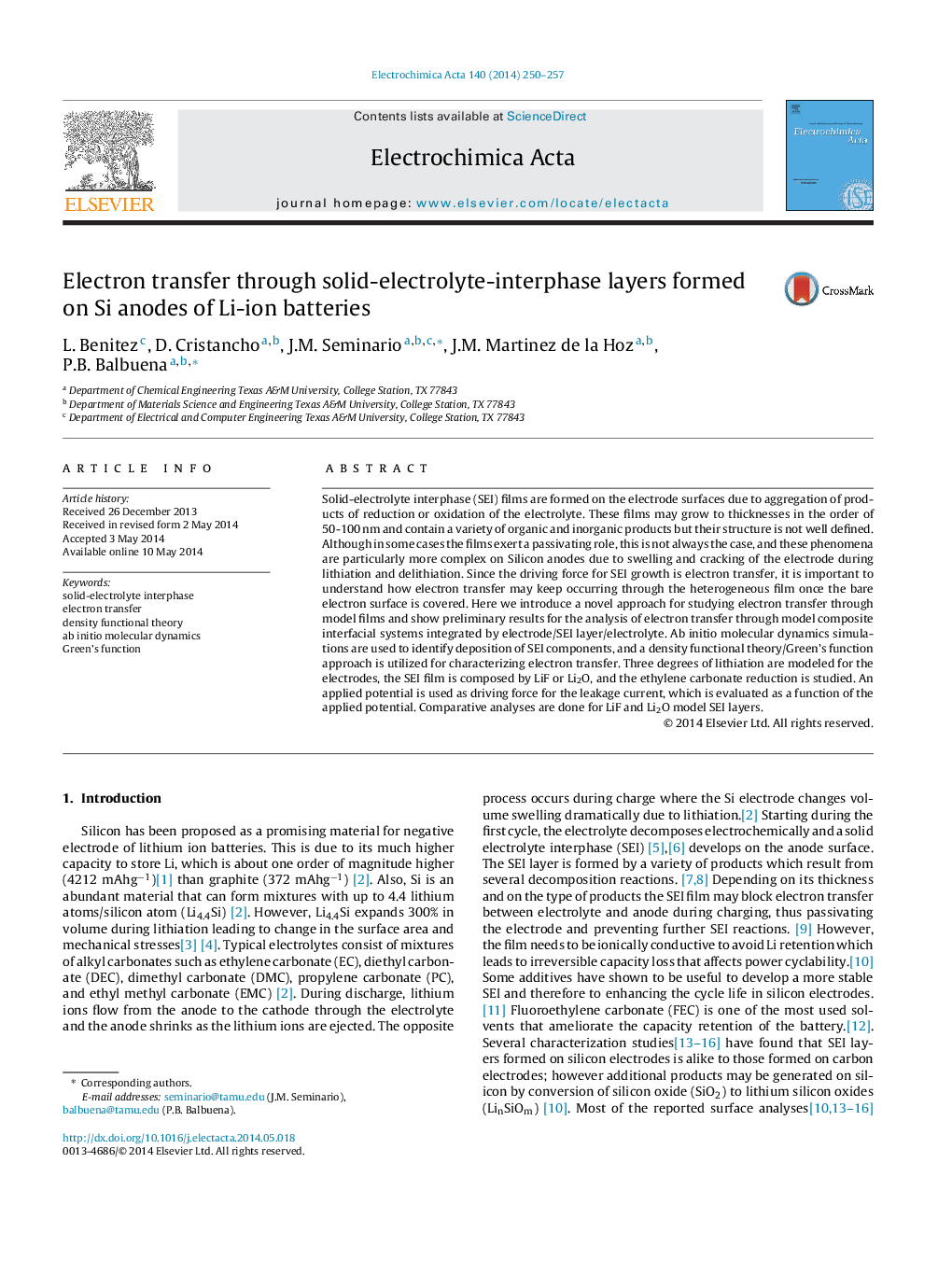| Article ID | Journal | Published Year | Pages | File Type |
|---|---|---|---|---|
| 185217 | Electrochimica Acta | 2014 | 8 Pages |
Solid-electrolyte interphase (SEI) films are formed on the electrode surfaces due to aggregation of products of reduction or oxidation of the electrolyte. These films may grow to thicknesses in the order of 50-100 nm and contain a variety of organic and inorganic products but their structure is not well defined. Although in some cases the films exert a passivating role, this is not always the case, and these phenomena are particularly more complex on Silicon anodes due to swelling and cracking of the electrode during lithiation and delithiation. Since the driving force for SEI growth is electron transfer, it is important to understand how electron transfer may keep occurring through the heterogeneous film once the bare electron surface is covered. Here we introduce a novel approach for studying electron transfer through model films and show preliminary results for the analysis of electron transfer through model composite interfacial systems integrated by electrode/SEI layer/electrolyte. Ab initio molecular dynamics simulations are used to identify deposition of SEI components, and a density functional theory/Green's function approach is utilized for characterizing electron transfer. Three degrees of lithiation are modeled for the electrodes, the SEI film is composed by LiF or Li2O, and the ethylene carbonate reduction is studied. An applied potential is used as driving force for the leakage current, which is evaluated as a function of the applied potential. Comparative analyses are done for LiF and Li2O model SEI layers.
